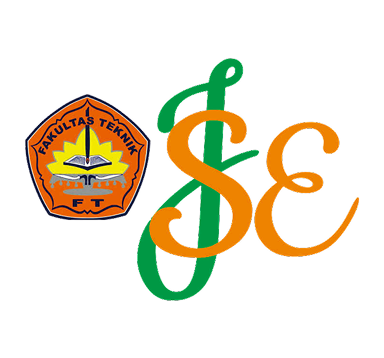Analisis Beban Kerja Fisik Menggunakan Metode Cardiovaskular Load dan Konsumsi Energi pada Karyawan Pemadam Kebakaran di PT X
Keywords:
Beban kerja, Beban kardiovaskular, Konsumsi energi, Pemadam kebakaranAbstract
The high physical workload of firefighters has the potential to cause fatigue and reduce performance, compromising safety and productivity. Given the importance of accurate measurement of physical workload, the aim of this study was to analyse physical workload using the Cardiovascular Load (CVL) method and energy expenditure to assess the level of physical intensity exerted by the body during work activities among firefighters using direct observation and pulse measurement during the working day, and estimation of energy expenditure based on recorded physical activity. The research results show that the physical workload of the employees is rather low, with an average CVL of 22.3%, indicating that there is no classification of fatigue. Energy consumption also has an average energy consumption value of 1.51, which shows that their energy consumption is in the light category. On the basis of the results of this analysis, PT also carries out regular health monitoring of physical conditions with the aim of keeping employees in optimal condition. It is hoped that this research will provide a basis for companies to develop policies to manage the physical workload of firefighters.
References
[1] M. Abi Nadhim and A. Eka Apsari, “Analisis Beban Kerja Fisik dan Mental dengan Menggunakan Metode Work Sampling dan NASA-TLX sebagai Upaya Peningkatan Produktivitas Kerja di PT. Putra Sulung Makmur Metal Castindo,” Jurnal Ilmiah Multidisiplin, vol. 2, no. 9, 2023.
[2] M. G. Gaos Sungkawa, M. S. Taufik, and A. K. Pratama, “Pengaruh Latihan Lari Interval Dan Latihan Fartlex Terhadap Peningkatan Vo2 Max,” Jendela Olahraga, vol. 5, no. 2, pp. 43–51, Jul. 2020, doi: 10.26877/jo.v5i2.6028.
[3] A. Yasmin, S. R. Rizalmi, and Muqimuddin, “Analisis Beban Kerja Menggunakan Cardiovascular Load, Konsumsi Oksigen dan Heart Rate Variability Pada Karyawan Bongkar Muat,” Journal of Manufacturing in Industrial Engineering & Technology, vol. 2, no. 1, pp. 1–8, Jun. 2023, doi: 10.30651/mine-tech.v2i1.18536.
[4] Mufida, Rina, and Zufra Inayah. "Hubungan Beban Kerja Fisik dan Beban Kerja Mental dengan Stres Kerja (Studi Kasus: pada Pekerja PT. Bumi Persada Karya)." Jurnal Kesehatan Tambusai 5.3 (2024): 9311-9323.
[5] A. D. Thamrin and M. Paloboran, “Analisis Beban Kerja Fisik Terhadap Kelelahan Kerja Dengan Menggunakan Metode Cardiovascular Load Di PT. XYZ,” Jurnal Teknik AMATA, vol. 03, no. 2, 2022.
[6] C. R. Nugroho, E. Yuniarti, and A. Hartono, “Alat Pengukur Saturasi Oksigen Dalam Darah Menggunakan Metode Photoplethysmograph Reflectance,” Al-Fiziya: Journal of Materials Science, Geophysics, Instrumentation and Theoretical Physics, vol. 3, no. 2, pp. 84–93, Dec. 2020, doi: 10.15408/fiziya.v3i2.17721.
[7] R. Suhartina and T. Abuzairi, “Pulse Oximeter Monitoring Bracelet for COVID-19 Patient using Seeeduino,” Jurnal Ilmiah Teknik Elektro Komputer dan Informatika, vol. 7, no. 1, p. 81, Apr. 2021, doi: 10.26555/jiteki.v7i1.20529.
[8] E. Krisnaningsih, S. Dwiyatno, T. Arlani, A. D. Jubaedi, and D. Cahyadi, “Beban Kerja Psikologis dan Fisik dengan NASA-TLX dan Cardiovascular Load (CVL).”
[9] Diniaty, Dewi Diniaty. "Analisis Beban Kerja Fisik dan Mental Karyawan di Lantai Produksi pada PT Pesona Laut Kuning." SITEKIN: Jurnal Sains, Teknologi dan Industri 13.2 (2016): 203-210.
[10] L. D. Fathimahhayati, T. A. Pawitra, and T. B. Purnomo, “Optimalisasi Waktu Istirahat Berdasarkan Tingkat Beban Kerja Fisiologis (Studi Kasus: CV Eja Nursery, Kutai Kartanegara),” Jurnal Media Teknik dan Sistem Industri, vol. 7, no. 2, p. 112, Sep. 2023, doi: 10.35194/jmtsi.v7i2.3245.
[11] Muharmi, Ike, and Herto Dwi Ariesyady. "Penilaian Ergonomi terhadap Beban dan Posisi Kerja Manual Material Handling di Departemen Maintenance Support Service (Studi Kasus: PT. Chevron Pacific Indonesia)." Institut Teknologi Bandung (2012).
[12] C. J. Pujatari, D. Gustopo, and E. Adriantantri, “Penilaian Beban Fisik Pada Proses Produksi Menggunakan Metode Fisiologis (Studi Kasus Pada Pekerja Packaging Home Industry Ganesa),” Jurnal Mahasiswa Teknik Industri, vol. 4, no. 2, 2021.
[13] Y. Hidjrawan, I. Irwanda, and M. Marlinda, “Pengukuran Beban Kerja Operator Boiler Berdasarkan Denyut Nadi Melalui Pendekatan Fisiologis di PT. Beurata Subur Persada,” Jurnal Optimalisasi, vol. 8, no. 1, p. 106, Apr. 2022, doi: https://doi.org/10.35308/jopt.v8i1.5346
[14] Cut Ita Erliana, Syarifuddin Syarifuddin, and Yoga Trisyiam, “Analisis Pengukuran Beban Kerja Fisik Dan Mental Karyawan Menggunakan Metode Cardiovascular Load dan NASA Task Load Index di PT. Charoen Pokphan Cabang Gebang,” Industrial Engineering Journal /Industrial Engineering Journal, vol. 12, no. 1, pp. 39–48, Apr. 2023, doi: https://doi.org/10.53912/iej.v12i1.1099.
[15] Safirin, Mochammad Tutuk, et al. "Analisis Shift Kerja Terhadap Kelelahan Pegawai Produksi Melalui Pengukuran Beban Kerja Fisik Menggunakan Metode Cardiovasculair Load (CVL) dan Perhitungan Konsumsi Energi Pada Perusahaan Pabrikasi di Surabaya." Prosiding Seminar Nasional Waluyo Jatmiko. 2023.
Downloads
Published
Issue
Section
License
Copyright (c) 2024 Mohammad Zaini, Dira Ernawati (Author)

This work is licensed under a Creative Commons Attribution 4.0 International License.












